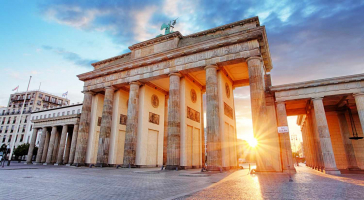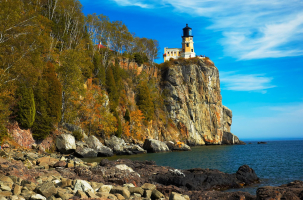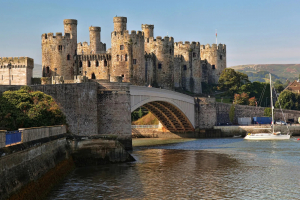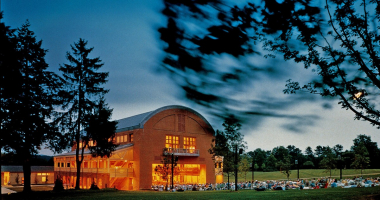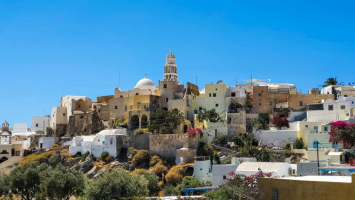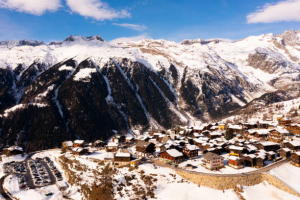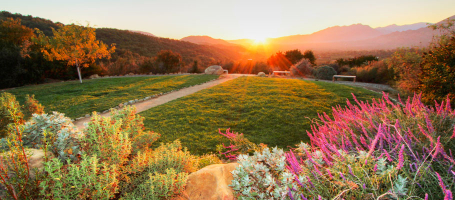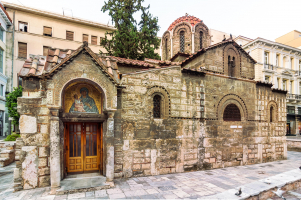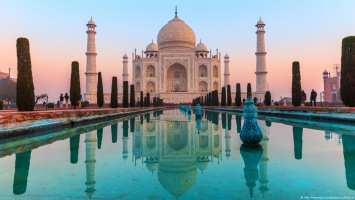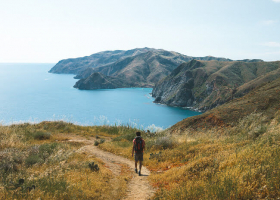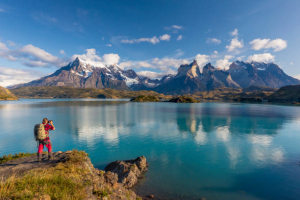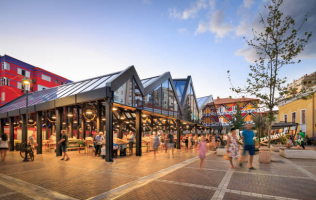Top 8 Best Things to Do in Turkey
It's hypnotic, captivating, and awe-inspiring... The more you talk about Turkey, the harder it will be to explain the city's magnificence. When we claim 10,000 ... read more...years of human civilization for Turkey, age is more than simply a number. There are many things to do in Turkey, which have some of the most stunning landscapes, a couple of historical sites, magnificent mosques, and one of the world's seven wonders. It has a culture that has ripened like old wine, natural beauty that has been enhanced through time, and architectural monuments that indicate continual up-gradation from traditional to modern structures, all of which reside on the same piece of the ground beneath the sun. Here are the best things to do in Turkey.
-
Ephesus is a historic city on the coast of Ionia in modern-day Turkey. It was an important Greek city and an outstanding example of a Roman port city. As a result, it is today regarded as one of the world's most significant places. Take a self-guided Ephesus Ancient City Tour to experience the remarkable monuments that give witness to the world's history at your own leisure. The remnants of the Temple of Artemis, one of the "Seven Wonders of the World", and The Library of Celsus may be found here. Furthermore, the Great Theatre may still be seen at Ephesus today. The Ephesus Ancient City Tour by Clio Muse Tours takes you on a trip through the majestic structures and ruins.
The well-preserved streets of Ephesus are strewn with remnants of daily life for the ancient Greeks and Romans who occupied the city for hundreds of years: stores and schools, temples and public restrooms. The finely carved facade of the Library of Celsus, formerly the third-largest library in the world, a massive open-air theater, a Roman bath, and several enormous fountains and gates are among the highlights of the main site. The Terraced Houses are well worth the additional entry price. These opulent mansions belonged to the Roman nobility and are filled with mosaics, frescoes, and marble worthy of a "Lifestyles of the Rich and Famous" episode.
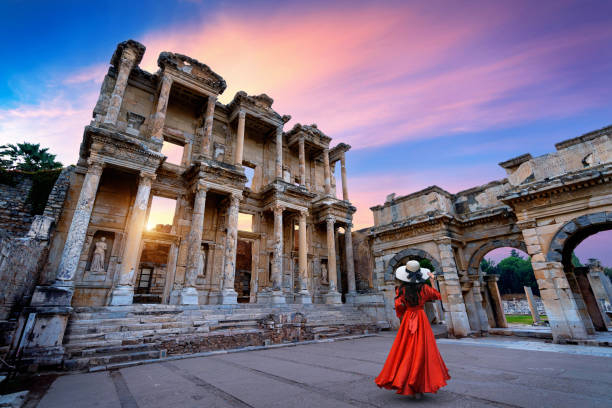
istockphoto 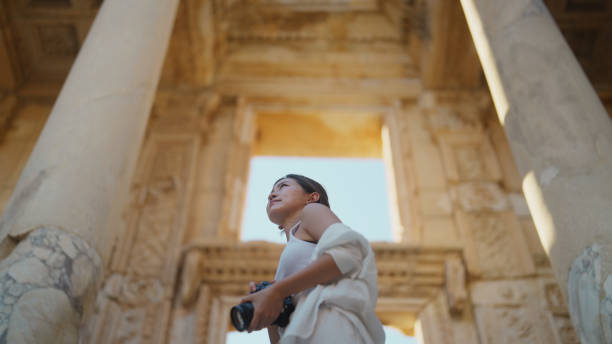
istockphoto -
A hammam, often known as a Turkish bath, is a sort of steam bath or a public bath connected with the Islamic culture. It is an important aspect of Muslim culture, having been acquired from the Roman thermae model. When most households lacked indoor plumbing, hamams (also known as Turkish baths in English) served an important function as a place to clean and socialize. Today, they're more of a special-occasion venue, visited by visitors than than residents, but they're still a luxury well worth indulging in.
In a contemporary hammam, guests strip while wearing a modesty garment or loincloth and continue into increasingly hotter chambers, causing perspiration. They are then cleansed with soap and rigorous rubbing by male or female employees (depending on the gender of the guest), before being rinsed in warm water. Bathers, unlike in Roman or Greek baths, normally wash themselves with flowing water rather than immersing themselves in standing water since this is a requirement of Islam, but immersion in a pool used to be traditional in some locations such as Iran's hammams. While most hammams work in a similar manner, there are notable regional variances in usage and construction.
The whole treatment includes a scrub and massage by a same-gender attendant, although you may also soak in their steamy chambers if you like. The grandest hamams, such as Istanbul's Ayasofya Hürrem Sultan Hamam, Caalolu Hamam, and Klç Ali Paşa Hamam, are a feast for the eyes as well as the body, with their marble-covered interiors and sky-lit domes. Hamams like Eski Kaplca and Yeni Kaplca in the former Ottoman city of Bursa contain pools supplied by the area's natural hot springs.
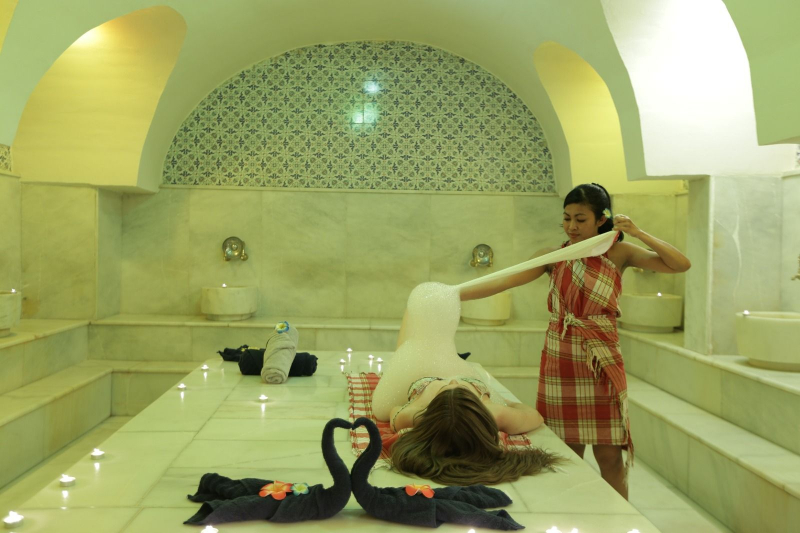
getyourguide.fr 
spaartemis.com -
Cappadocia's sinuous scenery stretches out to the horizon in undulating waves of rock colored blushing pink from above. Hot air ballooning may be huge business in this geological paradise, but don't believe that's the only way to see it. Butterfly Balloons and Royal Balloons may take you high above the sinewy valleys for a visual education in the long process of erosion that has shaped this part of Turkey. However, the undulating geography of Cappadocia is best enjoyed up close.
The pigeon house architecture of Cappadocia's valleys is a legacy of the area's agricultural tradition, making Swiss cheese out of the surrounding rock sides. Further exploration reveals cave churches and hermitages utilized by the religious groups that lived here during the Byzantine era, hidden within small valleys and cut out of the tor slopes of soft volcanic rock.
Walking through the valley furrows is like strolling through a fairytale setting. The region's conical rock formations, known locally as "fairy chimneys", look like something out of a child's imagination. The human history that may be examined here is just as astounding as the moonscape sweeps of natural splendor. Whatever path you take, when you return to earth after your hot air balloon journey, put on your hiking boots and stroll into the valleys themselves. Here are three of the greatest valleys for hikers to explore a broad cross-section of cultural heritage and natural magnificence.

istockphoto 
istockphoto -
Despite the growth of shopping malls and supermarkets, Turkey's ancient bazaar culture remains strong. Most historic districts will feature at least one çarş, which is a retail arcade or maze-like marketplace district with vendors selling everything from inexpensive trinkets to handcrafted leather or metal goods. The most renowned example is Istanbul's Grand Bazaar (known as the Kapal arş, or "covered bazaar" in Turkish), while others in locations like as Gaziantep and Anlurfa are more atmospheric and real.
The pazar, an open-air market selling fresh seasonal fruits and vegetables and other food products, as well as apparel and home goods, is equally vibrant and crucial to local life. They may be put up on the street beneath rigged-up tarps, in an emptied parking lot or garage, or in a purpose-built structure, depending on the town or city area. They're affordable and vibrant locations to purchase basics or just explore, and they're held in different neighborhoods on specific days of the week. Some big pazars, like as the weekly market in Fethiye, include vendors serving gözleme (stuffed flatbreads) and other modest foods to satisfy hungry buyers.
The blue evil eye, also known as Nazar Boncuk, is widely available in Turkish markets and stores. These Amulets are thought to provide good luck and guard against disaster. These blue amulets can be worn as a bracelet or necklace, or hung in automobiles, houses, or businesses. The many sizes and materials of these amulets make them an excellent choice while buying in Turkey for family and friends, or for yourself. The spiritual message and the sleek casual design will appeal to everyone.

istockphoto 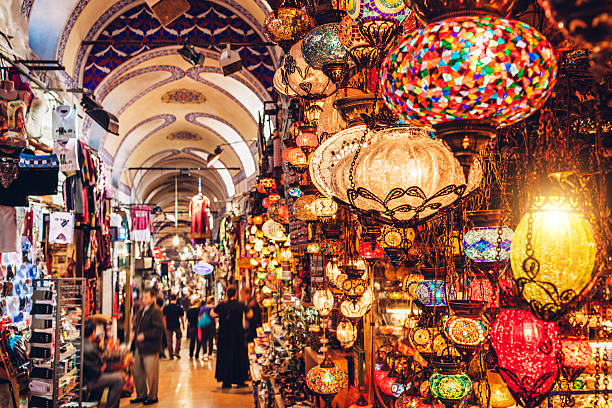
istockphoto -
Istanbul's architecture depicts a diverse range of structures that represent the different influences that have left an unmistakable imprint on the city's many neighborhoods. The architecture inside the city proper includes buildings and constructions from the Byzantine, Genoese, Ottoman, and contemporary Turkish periods. There are several architecturally notable structures in the city. Istanbul has earned a reputation as a cultural and ethnic melting pot throughout the course of its lengthy history. The rulers of the metropolis previously known as Byzantium and Constantinople made a tremendous impression.
A millennium and a half after its construction, the Hagia Sophia's soaring dome still awes visitors, while the towering Aqueduct of Valens and the vast subterranean Basilica Cistern attest to the impressive engineering feats employed by the Romans to supply the city and its residents with drinking water. Topkapi Palace, located on the Bosphorus, Golden Horn, and Marmara Sea, conjures the strength of the Ottoman Empire at its pinnacle, with magnificently painted apartments, a treasury dripping with huge gems, and a kitchen that can serve 4000 people. Istanbul's minaret-studded skyline is also an Ottoman legacy.
Visitors should not miss the modest, tile-bedecked Rüstem Paşa Mosque or the beautiful Süleymaniye Mosque, positioned atop one of the ancient city's seven hills. History aficionados may delve deep into Istanbul's many cultural eras by visiting its numerous museums that highlight the city's interesting heritage.
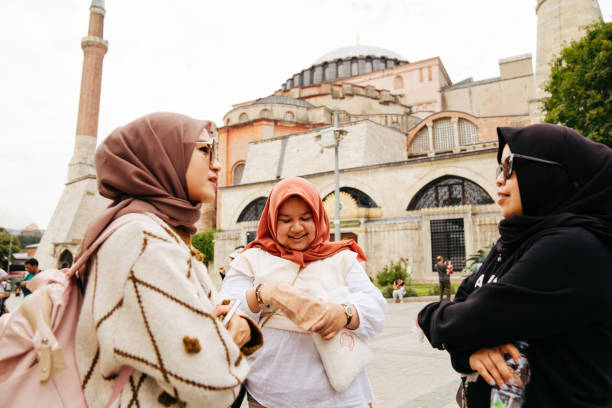
istockphoto 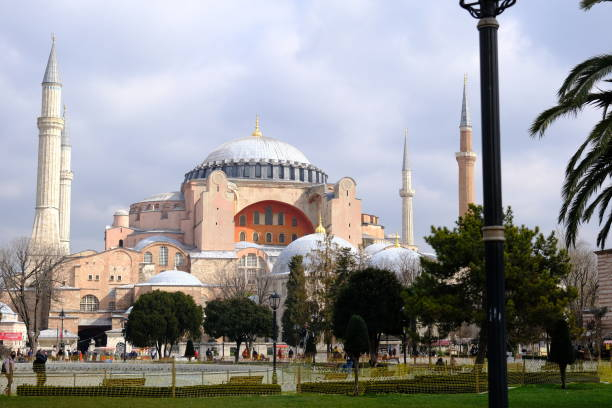
istockphoto -
A gulet cruise sampler proven to be the trademark experience in finding off-the-beaten-path beauties around Turkey's Turquoise Coast. The traditional wooden ships cruise distinctive itineraries throughout Turkey's southwest coast and several Greek islands, providing sufficient opportunities to swim, snorkel in beautiful waters, relax, and experience Mediterranean beauties. Few holidays are as soothing as a multi-day voyage on a gület (traditional wooden boat) along Turkey's southern coast between Bodrum and Antalya. Long, sunny days are spent swimming in isolated coves, reading or playing tavla (backgammon) on deck, eating fresh-caught fish, sipping rak as the sun sets, and sleeping beneath the stars.
If you get tired of happily lying around, you can go ashore to explore the ancient remains of Knidos, climb to the top of the Crusader Castle at Kaleköy, or stop for lunch at one of Kaş's hip cafe-restaurants. Take a look at your mental holiday wish list for the future and include ScicSailing. There will be fuel for the body, nutrition for the soul, and enough of breathtaking moments to rekindle your sense of adventure. Start daydreaming; a gulet sail in Turkey with ScicSailing is something you'll want to do again and again.
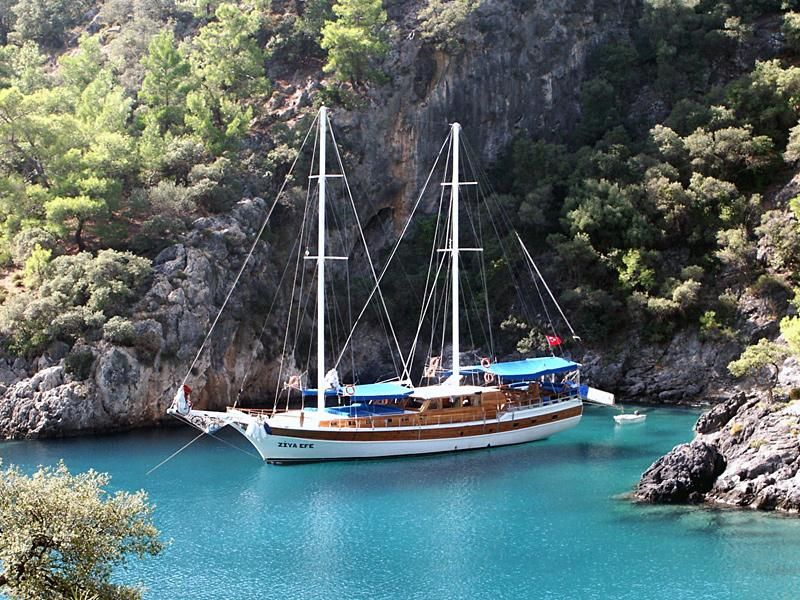
istockphoto 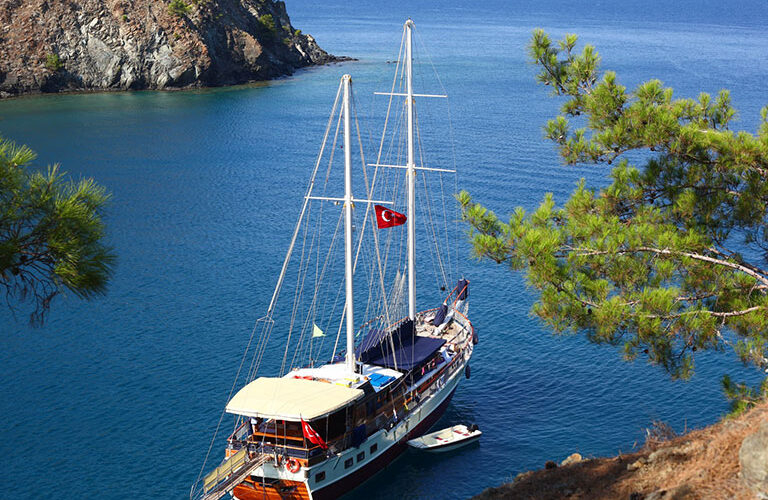
istockphoto -
The Lycian Way is a hiking trail that follows the remnants of the historic Lycian trade route along Turkey's Mediterranean coast. This walkway was created in the 1990s by a woman named Kate Clow from England. Her plan was to build a 509-kilometer-long Lycian Way connecting 18 historic cities from Fethiye to Antalya. She received the financial resources to implement the plan after winning a competition launched by a Turkish bank with this proposal, and she immediately began working on it. It took her two years to finish.
Turkey's first signposted long-distance hiking route that matched international standards opened in 1999. The Lycian Way was named one of the best 10 hiking paths in the world by the famous British Sunday Times. The occasionally difficult path goes along stunning coastal cliffs, through pastoral villages and seaside towns, through ancient ruins, and up into the mountains, and is best travelled in spring or fall. Most portions provide lodging in tiny pensions as well as camping. The isolated valley of Kabak, the long sandy beach of Patara, the gigantic rock tombs of Myra, the remains of Olympos, and the "flaming rock" at ral are all highlights along the road. Extend your vacation and spend some time exploring Turkey's amazing assortment of national parks if you want to explore more of the country's incredible terrain on foot and avoid the busy tourist destinations.
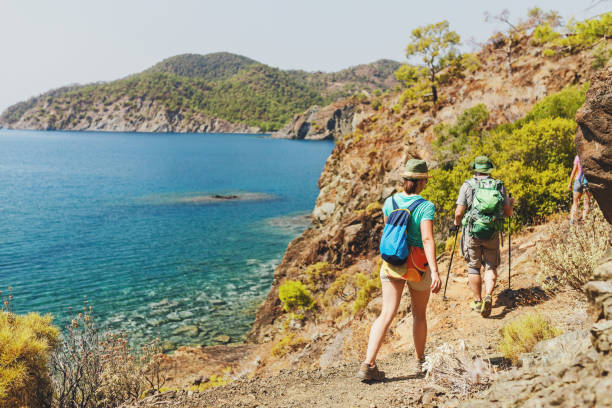
istockphoto 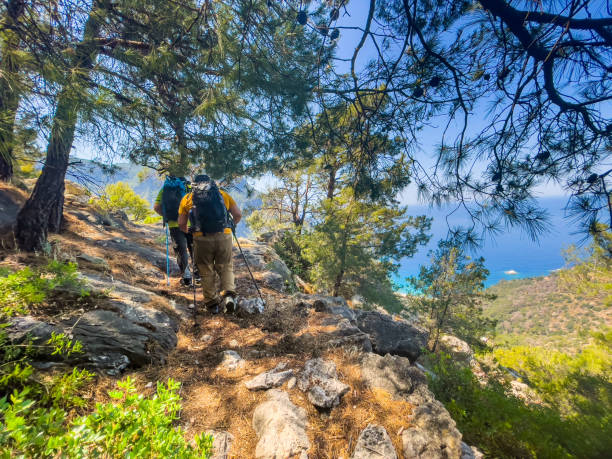
istockphoto -
Mount Nemrut is a mountain in southern Turkey that is 2,134 meters (7,001 feet) tall (Adiyaman Province). In reality, the month of April is too early to visit that location since it is still quite cold up on the mountain and there may be snow on the mountain. Another reason for being too early is the clouds; many people travel from all over the world to view the dawn and sunset, therefore it will most likely be overcast and you will miss the complete sunrise.
A Hellenistic monarch had gigantic sculptures of deities, legendary monsters, and other characters raised on top of a rocky summit as a memorial to his own supremacy in the first century BCE. Earthquakes have dislodged the heads of these sculptures from their bodies throughout the years, and they now sit dispersed across a desolate, distant region. Visitors are normally brought up here by tour groups at dawn or sunset, but if you stay overnight at one of the basic cottages a little below the peak, you may see both.
People travel from all over the world to see not only the stunning dawn and sunset views, but also the historical colossal sculptures (8-9 m/26-30 ft high) constructed by King Antiochus I Theos of Commagene in 62 BC. There are two major approaches to reaching the top. The one crossing through Adiyaman province is easier for those coming from the west of Turkey, while the one passing through Malatya province is easier for persons coming from the east. If you plan on visiting this location, be sure to bring your finest camera. Visiting this location will be one of the most memorable experiences of your life. The stunning dawn, enormous prestige, and historical history are all quite remarkable. You'll want to snap as many shots as possible.
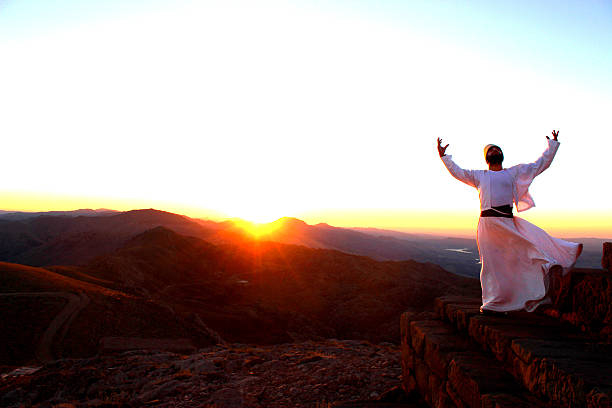
istockphoto 
istockphoto











